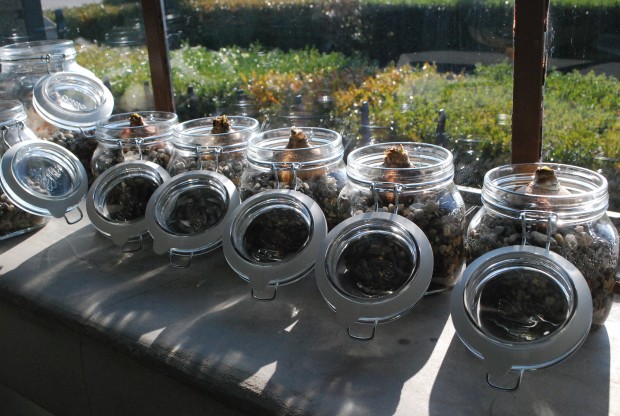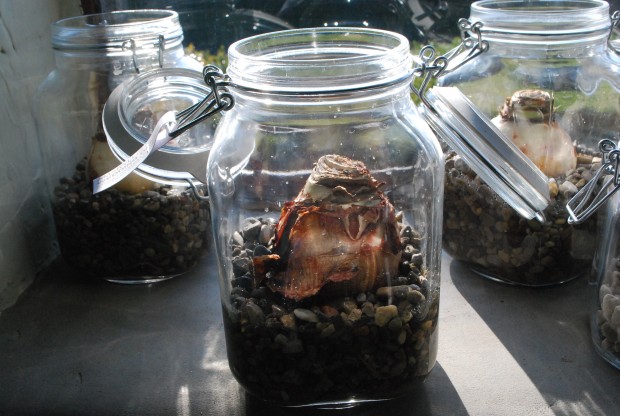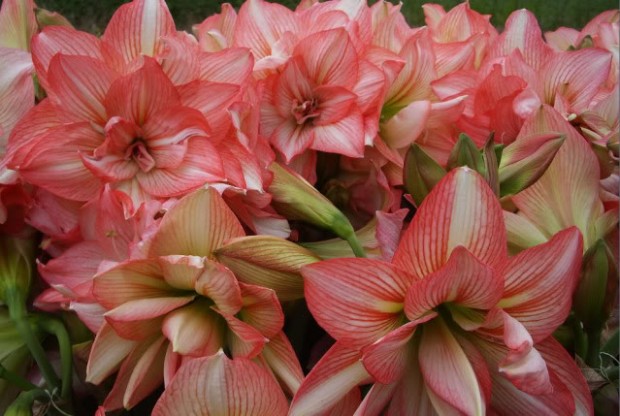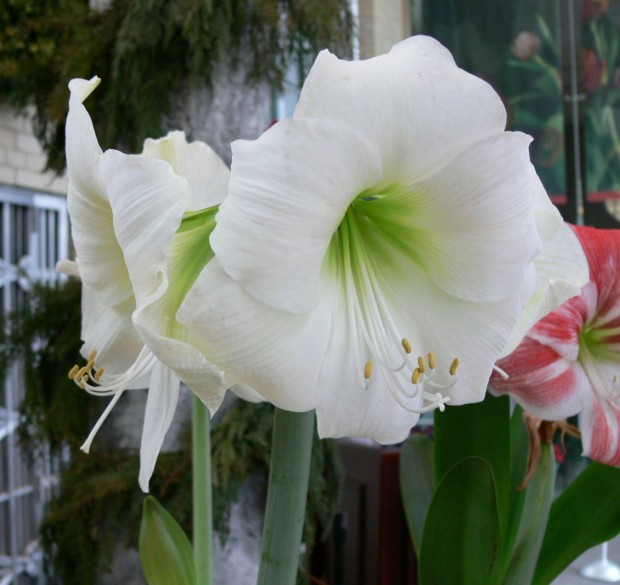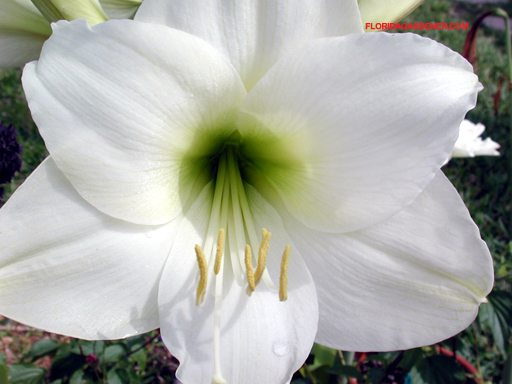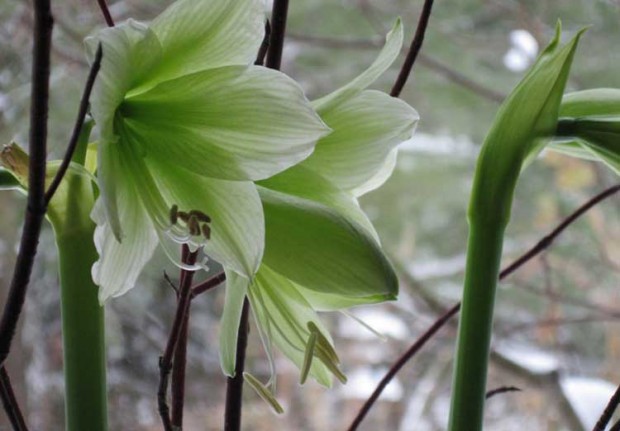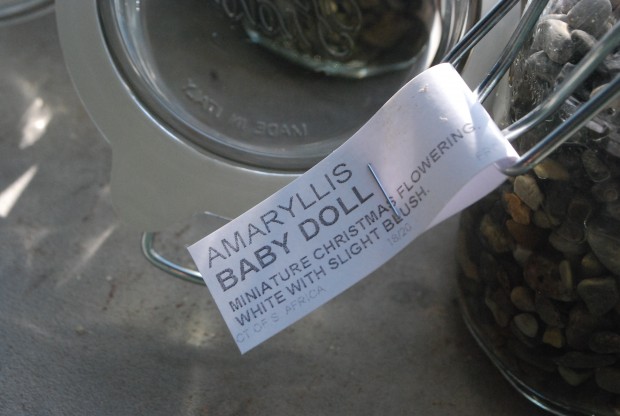I am no fan of plants in the house. Once the gardening season comes to a close, it is a relief not have to worry about keeping plants alive. Plants inside the house-what could possibly be more unnatural than that? Would I really subject a perfectly well meaning and decent plant to the dry heat and lack of sun that characterizes an interior space? Perhaps this is wrong, but I like the separation of my gardening life, and my personal life. OK, my gardening life is my personal life, but the thought of a winter getaway from the demands of the plants is attractive.
I have a very good friend whose house is loaded with all manner of tropical plants. Julia does a great job with them, and I marvel at how she is able to keep all of them looking great. She cannot bear to be without the garden for any longer than a moment; her house/conservatory is proof of that. I think if she had her choice, she would live in a conservatory situated in the middle of a giant property.
I have had friends bring me plants for the windowsill behind my desk. One Valentine’s day my landscape superintendent gave me a dozen auricula primroses-how I love them. I spent a whole winter doing watercolor paintings of them, such is my enchantment with them. It took me 3 months to kil them, but kill them I did. Stationed in the windowsill behind my desk, I could not remember to water them until they were in a state of utter dessication. After too many water crises, they finally gave up on me.
My friend and grower Marlene Uhlianuk, whose unusual plants and vegetables are a mainstay of my local market, gave me a pot containing the smallest rose in the world. She insisted it would be easy to take care of. On my window sill. It took a few months to prove her wrong, but prove her wrong I did. I still feel guilty about it.
Though the thought of trying to keep tropical plants alive, inside over a winter leaves me absolutely cold, I can be seduced. By amaryllis, that is. Bringing on amaryllis bulbs indoors late in the gardening year-a means by which even I can bring the garden indoors. 
The bulbs are enormous. The bigger the bulb, the more stalks, and flowers. The blooms are just as enormous-startlingly so. There are miniature varieties, like the amaryllis “Evergreen” pictured above. Though it is a miniature, it’s effect is anything but. Amaryllis is a very small genus of flowering bulbs made up of just two species. Amaryllis belladonna is a species native to South Africa. The taxomony aside, these hefty bulbs can produce flowering stalks from December until April.
Potted up, a solid two-thirds of the bulb needs to be above the soil line. This makes sense-big juicy bulbs have no need of too much water. As for “planting” amaryllis in soil in clay pots, with 2/3’s of the bulb above ground-this leaves me cold. I don’t have a conservatory or greenhouse, just a house. My idea of a household is a space unsullied by dirt. Apart from what the corgis track in, that is. Forcing bulbs in water is an alternative that sounds good.
I like to grow amaryllis in water. Water gardens are perfect for people who cannot remember to water-both inside and out. A jar, a bulb, and a handful of stones is a simple and easy means of bringing the garden indoors. The jar, and the stones-entirely up to you. Rob bought canning jars for our amaryllis this year. The capped jars from Fisk are so beautiful. I am dubious of any idea about which might make my winter easier. But in truth, the process of bringing the amaryllis into bloom indoors-simple and satisfying.
The amaryllis Baby Doll is white, with the slightest hint of blush pink. If these pictures do not make you long to grow some on your windowsill, then nothing will. The reward for your effort is considerable. If you follow a few simple rules, amaryllis can be grown on, and kept for years.
Grumpy about the passing of the gardening season? Growing amaryllis is guaranteed to help with that. Set the bulb low in the jar. The rim of the jar will help hold the heavy flowering stalks aloft. Add water to just below the basal plate of the bulb-the water is for the roots to reach for. Soaking the bulb itself in water is asking for rot. Provide a warm place. Amaryllis bulbs are ready and waiting to grow and bloom, meaning that even a haphazrd effort will probably produce flowers. Not interested in hauling in jars and bags of stone? Rob has all of these amaryllis ready and waiting.

